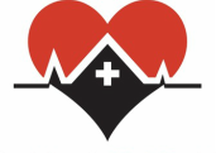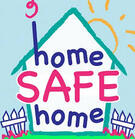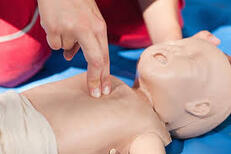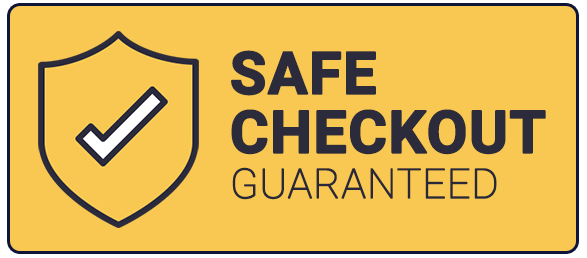SAFETY HAZARDS IN YOUR HOMESafety hazards occur in every home despite the size of the home or even the location. However, there are certain things that can be done to help identify and address household safety hazards before they escalate.
The following are 5 common household safety hazards, along with tips to reduce or eliminate these issues.
Comments
4 SIGNS THAT YOUR INFANT IS CHOKINGHealthcare providers are required to participate in pediatric advanced life support (PALS) training and have often trained in pediatric emergency assessment, recognition and stabilization (PEARS). However, most often parents and caregivers have not experienced this advanced level of training.
Deciding how to care for the new infant is often met with so many "unknowns" for new parents. A common fear of parents and caregivers is how to recognize if your infant child is choking. Since infants make lots of different sounds but can't verbalize what they are experiencing, it can be difficult to tell when a noise is a sign of an emergency. However there are a few signs to look for to determine if your infant is indeed choking and especially when eating. If you recognize any of the following then seek emergency assistance immediately by calling 911. 1. The infant’s face gets darker or develops a blue tinge. 2. The infant cries, but there is no sound. 3. The infant begins to flail or thrash around. 4. The infant has to make an effort to breathe. Here are five tips to help you deliver first aid to a choking infant: 1. Assess the situation. If a infant is unable to cry or cough, something may be blocking his or her airway. If the infant is coughing or gagging, the baby’s airway may only be partially blocked. If this is occurring, you should continue to let the baby cough in the hopes of dislodging the object. 2. Call 911. If you’re unsure about how to handle a choking infant, you should call 911 or have a friend or family member call 911 for you. The quicker you call 911, the quicker the infant can get the support that he or she needs to survive. 3. Use back blows. To administer back blows, place the infant face-up on one forearm and cradle the back of the head with the same hand. Then, place the other hand and forearm on the infant's front, use your fingers and thumb to hold open the infant's jaw and turn the infant over face-down on your forearm. With the heel of your hand, deliver five firm back blows between the infant's shoulder blades. 4. Perform chest thrusts. To perform chest thrusts, you should place your thumb and fingers to hold a infant's jaw open and keep the infant between your forearms to ensure maximum head and neck support. Next, place the tips of two or three fingers in the center of the infant's chest and push straight down on the chest approximately 1.5 inches. Administer five chest thrusts, and allow the chest to come back to its normal position after each thrust. 5. Repeat 5 back blows and 5 chest thrusts until the object is removed or EMS arrives. Infant cardiopulmonary resuscitation (CPR) is the next step to assist a choking infant if the infant becomes unresponsive. Here are three steps to follow to effectively administer infant CPR: 1. Determine whether a infant is unresponsive and not breathing. Tap the bottom of a baby’s foot and check for normal breathing. Call 911 immediately if the infant is not responsive. 2. Give chest compressions. Place one hand on the infant's forehead and two fingers on the center of the infan't chest. Then compress the chest by pushing straight down about 1.5 inches. Perform up to 30 compressions at a rate of one to two compressions per second and approximately 100-120 compressions per minute. 3. Give rescue breaths. Place one hand on the infant's forehead and two fingers on the chin and tilt the head back to a neutral position. Give the infant 2 light "puffs" of air by blowing into the infant's nose and mouth for about one second giving enough air to see the chest slighly rise. CPR and First Aid classes are ideal for parents and caregivers who need the skills and confidence needed to recognize signs of an emergency and then provide assistance until emergency personnel arrive. Our CPR and First Aid classes at Help-A-Heart CPR allow parents to practice CPR techniques and use the AED while collaborating with other students and instructors on best practices. To find out more information on our class schedule at Help-A-Heart CPR, give us a call at 210-380-5344. |
AuthorDr. Tracy A. Jones is the CEO of Help-A-Heart CPR, LLC and an American Heart Association, ASHI, and American Red Cross Master Program Trainer, Instructor, & AHA Faculty Member located in San Antonio, Texas. Archives
June 2024
Categories |
Help-A-Heart CPR, LLC | 1747 Citadell Plaza Suite 101 | San Antonio, Texas 78209 | (210) 380-5344 | [email protected]
Copyright © Help-A-Heart CPR, LLC 2024
100% Certification Acceptance
We promise your employer, school, or agency will accept the certification card we issue to you. If there is a question of acceptance or validity, simply send us an email at [email protected] with full details. We will reach out to the individual/entity and provide accreditation information. If still there’s a question, we will provide you with a full refund of your class fee. It’s that simple.
We promise your employer, school, or agency will accept the certification card we issue to you. If there is a question of acceptance or validity, simply send us an email at [email protected] with full details. We will reach out to the individual/entity and provide accreditation information. If still there’s a question, we will provide you with a full refund of your class fee. It’s that simple.
|
Communities Served
ALABAMA: Birmingham
ARKANSAS: Fayetteville, Hot Springs, Jonesboro, Little Rock NEW MEXICO: Albuquerque TENNESSEE: Knoxville TEXAS: Amarillo, Arlington, Austin, Bandera, Bastrop, Boerne, Brownsville, Comfort, Converse, Corpus Christi, Dallas/Ft. Worth, Del Rio, Dripping Springs, El Paso, Floresville, Fredericksburg, Georgetown, Harlingen, Houston, Junction, Katy, Kerrville, Kingsville, Kingwood, Laredo, Lubbock, Lufkin, McAllen, Midland, New Braunfels, Odessa, Pleasanton, Round Rock, San Angelo, San Marcos, Schertz, Seguin, Taylor, Temple, Texarkana, Tyler, Universal City, Victoria, Waco, The Woodlands |
Why Choose Help-A-Heart CPR?
1. Flexible Scheduling
2. On and Off Location Training Available 3. Casual, Fun Atmosphere 4. Best Price Guarantee 5. All Instructors are AHA and/or ARC certified 6. 5 Star Google Reviews 7. Blended Learning (Online & Skills Check) Available 8. Meets OSHA & College CPR Requirements 9. Get Certified Within 3-4 Hours 10.Certification Is Good For Two Years 11. Official AHA/ARC/ASHI Training Site 12. High Quality Safety Training! |









